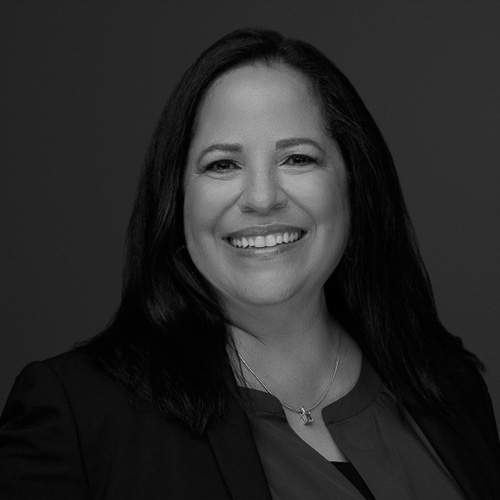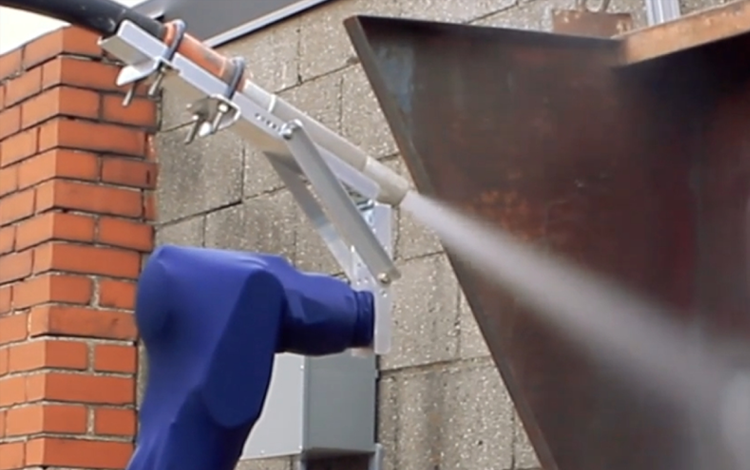Tackling the growing demand for automation with AI-driven robotics
Surface technology companies stand at a pivotal crossroads. 2025 will be a year of strong growth for the surface finishing market as demands increase, particularly in the automotive sector. The global metal finishing market alone is valued at $13.52 billion and is forecast to bloom to $120.79 billion by 2033[1]. Global automotive manufacturing will continue the push for preventing corrosion, adding reflective coatings, and improving part appearance.
With all this growth, the drive towards automation will only accelerate.
Traditional automation falls short in tackling the variability and complexity of tasks such as surface prep and finishing. Work processes like sanding, grinding, blasting, and coating rely heavily on skilled operators to apply the proper pressure, movement, and angle for consistent results. However, even the most experienced workers face issues maintaining uniformity across large production lines.
The use of robotics in surface finishing processes is growing. These robotic systems are equipped with advanced sensors and programmable settings, ensuring that a component receives identical treatment and eliminating inconsistencies caused by human error. The automation process also reduces exposure to hazardous materials, improving worker safety while optimizing production speed.
Traditional automated robotic systems primarily rely on sequential, low-level, manufacturer-specific programming delivered through a single hardware-focused system. Robots are preconfigured to do the same task repeatedly, with each movement and action meticulously programmed. However, they are often inflexible when adding new tasks or changing a current task beyond the original programming.
Getting Below the Surface Quickly
Surface preparation and finishing workflows face significant challenges due to variability, safety risks, and automation complexity. Traditional automation also has additional challenges with current surface-finishing robotics:
-
- Variability: Unstructured or inconsistent surfaces make it difficult for robots to adapt in real time, requiring precise force control and adaptive path planning with a high degree of human intervention.
-
- Complexity: Manual dexterity, visual judgment, and adaptability make full automation difficult with traditional systems, demanding advanced AI and sensor integration to handle edge cases and changing conditions effectively.
-
- Time-consuming: Ensuring the surface prep process for a particular part is programmed for success requires someone with years of experience working with programmers to program the proper sequence, pressure, etc. Programming these robots using conventional methods also takes a longer time, with deployments traditionally taking months and only able to be carried out by experienced programmers. This means longer downtimes for assembly lines for any change that impacts production and go-to-market speed.
-
- Skilled labor shortage: A 1.9M labor gap of unfilled U.S. manufacturing jobs is projected by 2033[2] adding another layer of complexity to finishing and coating operations, and a shortage of skilled labor becomes an even bigger problem as workloads increase. Manual surface preparation also exposes human workers to a high risk of injury due to hazardous materials and environments. In just one year, the manufacturing sector had over 396,000 non-fatal workplace injuries.[3]
Emerging adaptive automation is revolutionizing surface preparation and finishing workflows and taking these challenges head-on. Robotics with autonomous AI software are turning traditional automation into powerful adaptive systems with more agility in surface finishing by allowing them to perceive, reason, and adapt to variability in real time directly at the treatment stage.
Palladyne IQ software uses AI to offer human-like reasoning capabilities for industrial robots and collaborative robots (cobots). At the heart of the Palladyne IQ robotic AI software is a pioneering approach known as “closed-loop autonomy” that enables machines to observe, learn, reason, and act with remarkable agility, like humans, and complete a myriad of tasks precisely, quickly, and efficiently.
AI-driven robotic systems can adjust parameters in real-time based on the properties of materials and surface conditions in the treatment mix. These systems enable industrial robots to adapt to various geometries, unstructured environments, and complex surface contours. Consequently, they transform labor-intensive processes such as grit blasting, hydro blasting, sanding, and grinding into automated and efficient workflows that can be easily scaled.
For example, Palladyne IQ software enables robotic surface blasting robots to:
-
- Manipulate blast hose and tools accurately by adapting to varying surface conditions in real-time
-
- Achieve precise and consistent results, reducing the need for rework and human intervention
-
- Detect and respond quickly to potential hazards, ensuring safer operation and compliance with safety regulations
-
- Quickly retrain robots to perform new tasks with minimal downtime (low-code/no-code training)
-
- Reduce overhead costs and increase throughput, providing a faster ROI
Tackling Labor Shortage
Palladyne IQ software tackles the challenge of the shrinking labor market for skilled surface treatment workers while improving job safety. The robots are designed to reason like humans, ensuring consistent quality across various surface treatment applications. Additionally, AI-integrated automated robotic systems minimize worker exposure to hazardous materials and environments.
Easy low-code/no-code retraining helps robots perform new tasks with minimal downtime and quickly adapt to treatment changes. Operators can create and train tasks using a chatbot or demonstration-based training, which the robot then autonomously executes based on surface characteristics and adapts to changing circumstances. As a result, production volumes can be scaled to meet growing demands.
Palladyne IQ software operates “on the edge” without needing access to large data sets or a cloud connection. Unlike traditional large language models (LLMs) that predict outcomes and make recommendations, this system enables robots to make real-time decisions and act using minimal data. It is significantly more data-efficient than other deep learning-based methods, as it can make decisions with just hundreds of parameters obtained through training and real-time sensor inputs, rather than relying on extensive data points from the cloud like traditional LLMs do.
Palladyne AI foundational technology operates autonomously in dynamic environments, effectively reacting to new circumstances without relying on large amounts of cloud-based computing, which can introduce latency issues or require downtime for reprogramming or retraining.
Enabling robots to perceive variations or changes in the real-world environment and teaching them to adapt to tasks dynamically will enhance the overall production process across surface finishing companies. By implementing automation solutions like Palladyne IQ robotic AI software, industries can ensure their products meet the highest standards, keep pace with production demands, and maintain a competitive edge for the future.
This blog contains forward-looking statements within the meaning of the Private Securities Litigation Reform Act of 1995, including, but not limited to, statements regarding the capabilities or future capabilities of Palladyne AI’s foundational technology and products and the industries that could benefit from them. Generally, statements that are not historical facts, including statements concerning possible or assumed future actions, business strategies, events, or results of operations, are forward-looking statements. These statements may be preceded by, followed by, or include the words “believes,” “estimates,” “expects,” “projects,” “forecasts,” “may,” “will,” “should,” “seeks,” “plans,” “scheduled,” “anticipates,” “intends” or “continue” or similar expressions. Such forward-looking statements involve risks and uncertainties that may cause actual events, results, or performance to differ materially from those indicated by such statements. Palladyne AI assumes no obligation to update such statements. For a discussion of these and other related risks, please refer to the statements set forth in the reports which Palladyne AI has filed or will file from time to time with the Securities and Exchange Commission. Such filings may be obtained free of charge at www.sec.gov.
[1] https://www.businessresearchinsights.com/market-reports/metal-finishing-market-111374
[2] Deloitte & The Manufacturing Institute, 2024
[3] Employer-reported workplace injuries and illnesses, 2023, Bureau of Labor Statistics, Nov 8, 2024)



